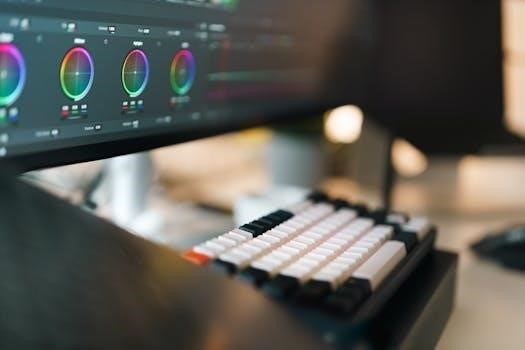The Purpose Driven Life‚ a renowned guide‚ explores life’s core question⁚ “What on Earth am I here for?”․ It offers a transformative 40-day spiritual journey to discover your unique purpose and significance‚ emphasizing a life beyond personal fulfillment․
The Core Concept of Purpose
The central idea behind The Purpose Driven Life revolves around understanding that your existence extends beyond personal aspirations‚ happiness‚ or worldly success․ It posits that every individual is intentionally created by God for specific purposes․ Discovering these purposes is not about self-help‚ but rather about understanding God’s plan for your life․ It’s about moving past mere survival and striving for significance․ This journey involves recognizing that life’s true meaning isn’t found in personal ambitions‚ but in aligning with God’s intentions․ The book encourages a shift in perspective‚ urging readers to seek fulfillment in something far greater than themselves․ It challenges the notion of a self-centered life‚ instead promoting a life devoted to God’s will‚ and thereby unlocking true meaning and purpose․
Understanding the Book’s Framework
The book is structured as a 40-day spiritual journey‚ designed to guide readers through the process of discovering their God-given purposes․ It provides a clear framework for reflection and growth․
The 40-Day Spiritual Journey
The core of the book is its structured 40-day spiritual journey‚ which is designed to guide individuals on a path of self-discovery and spiritual growth․ This journey encourages daily reflection and application of the book’s principles․ Each day focuses on a specific aspect of God’s plan for humanity‚ offering readers a chance to connect with their faith and understand their unique purpose within that context․ This structured format helps readers to gradually absorb and apply the teachings‚ making it more than just a theoretical exercise‚ but a practical roadmap to a more meaningful existence․ The journey is not just about reading but also about personal transformation․
Five Purposes Outlined in the Book
Rick Warren’s book details five key purposes that he believes God has for every human life․ These purposes are to worship God through developing a personal friendship with Him‚ experience fellowship as a member of God’s family‚ grow to become like Christ‚ serve others by utilizing your unique talents‚ and share your story with the world․ These are not merely suggestions but are presented as fundamental aspects of a fulfilling life․ Each of the five purposes provides a distinct avenue for spiritual growth and contributes to a balanced and meaningful existence․ The book guides readers to explore these purposes in their own lives and actively live them out․
Availability of the Book in PDF Format
The Purpose Driven Life is widely accessible in PDF format‚ allowing readers to conveniently download and engage with the book’s content on various digital devices․
Downloading the PDF Version
The digital version of The Purpose Driven Life‚ readily available in PDF format‚ offers a convenient way to access the book’s transformative content․ Numerous websites and platforms provide options to download the PDF‚ often requiring a simple search or registration process․ This accessibility allows individuals to begin their 40-day spiritual journey immediately․ Be sure to obtain the PDF from authorized sources to respect copyright laws and ensure the authenticity of the content․ The digital format allows you to start discovering the answer to life’s most important question from the convenience of your personal device‚ enabling a flexible reading experience․
Accessibility on Various Devices
The Purpose Driven Life PDF is designed for seamless accessibility across a wide array of devices‚ ensuring that readers can engage with the content regardless of their preferred technology․ Whether you prefer reading on smartphones‚ tablets‚ e-readers‚ or computers‚ the PDF format adapts effectively to each screen size․ This compatibility allows for a personalized reading experience‚ enabling individuals to delve into their spiritual journey at their convenience․ The ability to access the book on multiple devices ensures that you can carry this transformative guide with you wherever you go‚ facilitating continuous engagement with its teachings․
Supplementary Resources
To enhance understanding‚ The Purpose Driven Life offers workbooks and study guides․ A free weekly devotional is also available‚ furthering the book’s teachings and promoting personal growth․
Workbooks and Study Guides
Rick Warren has thoughtfully created supplementary resources‚ including workbooks and study guides‚ designed to deepen the reader’s engagement with The Purpose Driven Life․ These resources are invaluable for those seeking to apply the book’s principles to their daily lives․ The workbooks offer interactive exercises and reflective questions‚ promoting a more profound understanding of the material․ They facilitate personal growth and encourage readers to explore their unique purpose․ By using these additional tools‚ individuals can better internalize the teachings‚ making the journey towards a purpose-driven life more effective and transformative․ The study guides are ideal for both individual and group settings‚ fostering meaningful discussions and shared learning experiences․
Free Weekly Devotional
To further support individuals on their journey towards a purpose-driven life‚ a free weekly devotional is available․ This devotional serves as a continuous source of inspiration and guidance‚ reinforcing the concepts introduced in The Purpose Driven Life․ By subscribing to this free resource‚ readers receive regular email content‚ designed to provide ongoing reflection and application of the book’s teachings․ The weekly devotional offers a convenient way to stay connected with the principles of the book and integrate them into daily routines․ It provides a consistent reminder of God’s plan‚ fostering a deeper understanding and a more meaningful existence․ This complimentary resource is a valuable addition for anyone committed to living a purpose-driven life․
Impact and Influence
Translated into over 50 languages‚ The Purpose Driven Life has impacted millions globally․ It offers a guide to a spiritual journey‚ transforming readers’ lives and providing a roadmap to a more fulfilling existence․
Global Reach and Translations
The Purpose Driven Life has achieved remarkable global reach‚ transcending cultural and linguistic barriers to impact a vast international audience․ Its message of purpose and meaning has resonated deeply with people from diverse backgrounds‚ leading to translations in over 50 languages․ This widespread availability allows individuals worldwide to access the book’s teachings and embark on their own 40-day spiritual journey․ The book’s universal themes of identity‚ significance‚ and a relationship with God have contributed to its success in connecting with readers across different nations․ The translated editions ensure that the book’s profound message is accessible and understandable to people in various corners of the world‚ fostering a global community of individuals seeking purpose;
Transformative Effect on Readers
The Purpose Driven Life has had a profoundly transformative effect on countless readers‚ guiding them toward a deeper understanding of their purpose and relationship with God․ Many individuals have reported experiencing a significant shift in perspective‚ moving from a focus on personal fulfillment to a life of meaning and service․ The book’s practical advice and spiritual insights have empowered readers to discover their unique gifts and talents and utilize them for a greater purpose․ Through the 40-day journey‚ readers often find themselves experiencing increased clarity‚ renewed hope‚ and a stronger sense of connection to their faith․ This transformative impact highlights the book’s ability to address the fundamental questions of human existence and guide individuals towards a fulfilling life․
Copyright and Sharing
Sharing The Purpose Driven Life is encouraged‚ but respecting copyright is crucial․ Obtain authorized copies to support the author’s work and ensure proper distribution of the material․
Respecting Copyright Laws
When engaging with The Purpose Driven Life in PDF format‚ it’s essential to acknowledge and adhere to copyright laws․ This means that while sharing the book’s message is commendable‚ distributing unauthorized copies infringes on the author’s rights and the publisher’s investment․ The digital format‚ while convenient‚ does not diminish the need to obtain the book legally‚ respecting the intellectual property involved․ Purchasing authorized copies‚ whether in print or digital form‚ not only ensures the author’s work is supported but also safeguards the integrity of the material․ Always seek legitimate sources for the PDF to avoid any legal or ethical violations and to ensure the authenticity of the content being shared․ This also encourages the continued publication of valuable resources․
Authorized Copies and Distribution
To ensure you’re accessing The Purpose Driven Life PDF legally and ethically‚ it’s important to obtain authorized copies from reputable sources․ These may include official publishers‚ recognized online retailers‚ or platforms that have secured distribution rights․ Downloading from unverified websites or file-sharing networks risks acquiring pirated versions‚ potentially compromising the integrity of the content and infringing on copyright regulations․ Authorized copies guarantee that the author and publisher are fairly compensated for their work‚ supporting the creation of future resources․ By choosing legitimate avenues‚ you contribute to the ethical distribution of the book and ensure you’re engaging with the authentic text‚ free from alterations or omissions․ This practice promotes respect for intellectual property and helps sustain the publishing industry․
Additional Resources
Enhance your journey with the Purpose Driven Life app‚ offering interactive tools․ Access additional materials via QR codes‚ expanding your study and engagement with the book’s teachings․
Purpose Driven Life App
The Purpose Driven Life app is designed to deepen your understanding of God’s plan for your life‚ offering a mobile platform to engage with the book’s core concepts․ This application provides a convenient way to explore the principles of purpose-driven living‚ right from your smartphone․ It’s important to note that the app uses resources and images that are free of copyright‚ ensuring compliance with usage and distribution rights․ The app also features public video content hosted on YouTube‚ enabling viewing and sharing capabilities․ However‚ it does not allow downloading of video content‚ maintaining the integrity of the original source․ This app serves as a valuable digital companion to the book‚ providing readily accessible resources for your spiritual journey․
QR Code Access
To further enhance accessibility‚ resources related to The Purpose Driven Life often utilize QR codes․ These codes offer a quick and convenient way to access additional content‚ such as supplementary materials‚ online studies‚ or the digital PDF version of the book․ To make use of these QR codes‚ you will need a QR code reader app installed on your smartphone or tablet․ These apps are readily available for download from your device’s app store; Once you scan the QR code‚ it will direct you to the corresponding online resource․ This feature simplifies access to a wide array of content‚ making it easier to engage with the teachings of The Purpose Driven Life anytime‚ anywhere․














